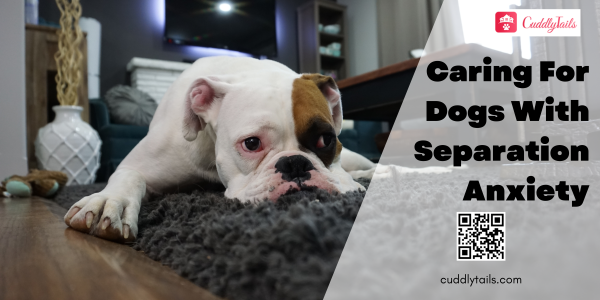Caring For Dogs With Separation Anxiety
Dogs are social animals and thrive on the companionship of their human family. However, when left alone, some dogs may experience separation anxiety that causes significant distress for the dog and their owner. As a pet owner, it is your responsibility to take care of your dog’s mental and emotional health.
What Is Separation Anxiety In Dogs?
Separation anxiety is a condition in which a dog becomes anxious and stressed when their owner leaves them alone or separates from them. Past traumas, lack of socialization, or changes in ownership and environment can cause separation anxiety in dogs.
It is important to note that not all dogs experience separation anxiety. Some dogs can be left alone without issues, while others suffer greatly. Factors such as breed disposition, past experiences, age, and temperament can affect whether or not a dog develops separation anxiety.
Signs and Symptoms of Separation Anxiety
When left alone without the supervision of their parent, dogs suffering from separation anxiety can show these symptoms:
- Excessive barking or whining
- Destructive behavior
- Inappropriate elimination
- Self-injurious behavior
- Pacing back and forth anxiously
- Excessive drooling or panting
- Refusal to eat food or drink water
Tips To Care For Dogs With Separation Anxiety
Create a Safe Place
One of the most effective ways to manage separation anxiety is to create a safe and secure space for your dog. This can be a specific room or a crate your dog feels comfortable in. Make it cozy by providing soft bedding, toys, and treats to keep your pup entertained. Dogs are den animals, so having a small, enclosed area that smells like you can be comforting to them.
Establish a Routine
Keeping a consistent routine can help reduce stress for dogs suffering from separation anxiety as it helps create predictability in their daily lives.
Gradual Separation
Start by leaving your pup for short periods and gradually increase the duration until they become more comfortable being away from you. You can also practice leaving and returning without making a big fuss to minimize stress on your dog.
Exercise and Playtime
Regular exercise and playtime are essential for a dog’s physical and mental health. A tired dog is less likely to experience separation anxiety than a dog who hasn’t had enough exercise. Take your dog for a walk, play fetch, or engage in interactive play to help manage their anxiety.
Calming Supplements
If your dog’s separation anxiety is severe, there are calming supplements available that can help alleviate their symptoms. These supplements typically include natural ingredients such as chamomile or valerian root that help promote relaxation and calmness in dogs.
Professional Help
If your dog’s separation anxiety is severe and affecting their daily life, it may be best to seek the help of a professional. A veterinarian or a dog behaviorist can provide advice on how to manage your dog’s anxiety and work with you to develop a tailored plan.
Conclusion
In conclusion, caring for dogs with separation anxiety requires patience, consistency, and compassion. With the right approach and understanding, you can help your dog feel more secure and comfortable when left alone. Remember to always treat your dog with love and care, and they will be your loyal life companion.
Find pet sitters/walkers who are deeply dedicated and concerned about your pet on Cuddlytails. Visit www.cuddlytails.com or download our Android or iOS app now!

